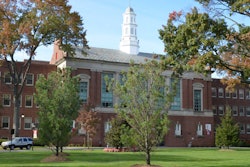Years of talking about and organizing around diversifying the science, technology, engineering, and mathematics (S.T.E.M.) pipeline is about to be put to the test immediately in cities like Miami. The tech train is leaving the station and while it is wonderful for those who will be on the board with lucrative economic opportunities, it may further marginalize those who are left back at the station of occupational segregation and economic stratification.
684 high paying tech-orientated jobs with an average salary of $162,000 a year are headed to downtown Miami with more to come. The push to bring Silicon Valley to Miami has accelerated significantly during the COVID-19 pandemic due a number of factors including the expansion of the virtual workplace which enabled people to work from anywhere, no state taxes, and a year-round warm climate. Additional efforts lead by City of Miami Mayor Francis Suarez in recruiting tech companies to the city have helped to intensify the pace of their arrival.
The big changes in the tech sector that are happening in Miami can be scary for some. There is a fear of being left behind and not being able to keep up with or afford the “New Miami”. There are fears that this will accelerate the pace of some unwanted elements of what has taken place in areas like San Francisco for some time like massively overpriced housing, crippling traffic, and a reduced overall quality of life. There is concern that the bulk of the population will be in Bedrock living like the stone age “Flintstones” while the other part of town will be living in the space age like the “Jetsons”. Will kids who are currently growing up in Miami be able to afford to live in the city when they reach adulthood?
The influx of tech companies represents an intrusion into the Miami economy that has brought about a moment of impasse where maintaining the status quo could result in an even greater bifurcation of social classes. The question of how equitable the New Miami will be remains to be seen. The bill for the S.T.E.M. push that has taken place for a number of years now is due in Miami and the pending question is how diverse the payment will be. Will underrepresented communities get a piece of this pie or be left with crumbs that are pushed off of the “big table”? Who is in the pipeline and prepared to take advantage of this window of opportunity?
 Dr. Marcus Bright
Dr. Marcus BrightEquity and justice in access to opportunity is something that stakeholders will have to be vigilant around if some of the mistakes of the past are to be avoided. Rapid progress in the tech space will not be accompanied by equity unless intentional efforts are made to provide access to digital tools, skills training, and a cutting-edge curriculum that will empower people to gain access to the tech prosperity train.
We must find immediate ways to build bridges to connect people with these emerging opportunities. Bridges need to be constructed to close the tech opportunity divide without delay. There is a crucial need to align the skills needed in the increasing digitization of the economy with the training that takes place on a regular basis.
A race to train the people who already exist in the area for these new tech positions should be pursued with the same intensity that firms and people are being recruited to come to Miami. It is not too late to connect more people with new pathways to get on the train before it leaves the station. New pathways to skill development are a primary component to the kind of social transformation that can occur for those who are able to get aboard and ride the tech train.
As daunting as it may seem to some, the influx of tech-oriented companies that are coming to Miami and other cities across the country is something that should be faced head on and embraced. This movement is not something that can be run from but is something that we should run towards. A new narrative about technology that informs people’s day-to-day meaning system needs to become dominant to the point where standard practices change.
There are certainly great challenges, particularly in the areas of equity, access, and inclusion but they can be met with strategic partnerships and collaboration to provide pathways of opportunity. College and universities look to be the key connecting institutions between lucrative jobs and populations that have historically been unable to take advantage of previous economic booms.
There is also a need for higher education institutions to partner with employers to provide work experiences that will be designed to enable students to gain exposure to the requirements of the tech working world and to be inspired and energized to continue their studies through the practical application of their skills and knowledge. New bridges are needed to connect diverse students with the emerging tech field. The window of opportunity is open and the S.T.E.M. pipeline test is here. The tech train is about to leave the station. Whether or not we get on board is up to us.
Dr. Marcus Bright is a scholar and educational administrator.



















